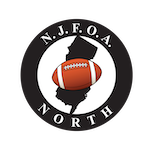Pass Interference Guidelines Primer
Below is a primer on the how Pass Interference guidelines should be interpreted, republished from the NJFOA-North Archives, 2007.
A minor editorial change was made to this republishing, as face guarding is no longer considered PI in the NFHS and was removed from this article:
The NFL did exhaustive research into PI and the various types. They boiled it all down to these fundamental things:
1. There are two indicators that make a player 'suspect' for PI:
- Bite - when a player 'bites' on a move and then has to try to recover, such as when a receiver does a hook 'n' go - if he bites on the hook, he will frequently try to recover by grabbing the receiver as he goes by, etc., which will probably constitute defensive holding and can turn into PI if a pass is subsequently thrown.
- Chase - when a player is chasing an opponent, either by design or because he is beaten, he may tend to commit PI.
2. There are six categories of PI:
- Arm Bar - an arm across the body restricting the opponent from moving where he wants to go and, maybe more importantly, keeping him from raising his arms to make the catch. An arm across the body is not enough - there must be a restriction of movement.
- Hold - actually grasping an opponent, particularly the arm, restricting him from being able to reach a pass. Classically, grabbing an arm, keeping the opponent from raising it to catch the pass.
- Not playing the ball - the player is not making a bona fide effort to reach the pass (usually not looking back for the ball), and contacts the opponent (usually body to body) restricting the opponent from moving where he wants to go, or knocking the opponent off his path to the ball.
- Playing through the back - even if making an effort to touch the pass, contacting an opponent through the back, restricting his ability to catch the pass.
- Hook and twist - hooking the arm around the waist or shoulders, AND twisting the opponent, restricting him from his effort to touch the pass. An arm around the body is not enough - there must be a twist or turn. The offender is usually reaching around the receiver’s body attempting to knock the ball away with his other hand. Watch the outside shoulder of the restricted player. If it moves away from the ball, chances are good that you have a foul.
- Cutoff - even if looking back for the ball, a player cannot position himself and contact an opponent to restrict or prevent him from moving toward a pass. In practice, this resembles blocking out an opponent in basketball.
There is usually contact to have PI - but contact alone does not indicate PI as there must be a real 'restriction' for PI to occur. While ‘catchability’ itself is not a factor in determining whether or not PI has occurred, a 2005 rule change says that contact away from the direction of the pass should be ignored unless it is a personal foul, illegal use of the hands, or holding. In such cases, those rules will govern penalty enforcement — not pass interference enforcement.
Note that two players both making an effort to reach the ball might 'bang arms' -- no foul! Another situation: Two opponents running side by side down the field and maybe even through a cut. Some minor contact. NFL calls this a “snuggle.” Ignore it—no foul!
PI is almost always going to occur from the waist up. Don’t watch the ball…watch the opponents. Players running side by side or in tandem who get their feet tangled with no OBVIOUS intent to impede - no foul as long as both are playing the ball, i.e. making a bona fide attempt to move toward or catch the pass.




